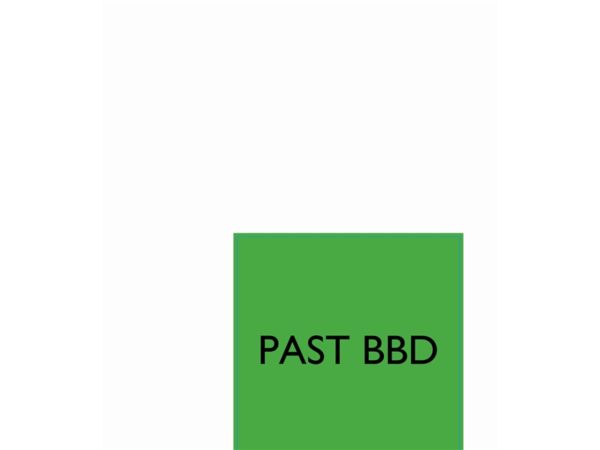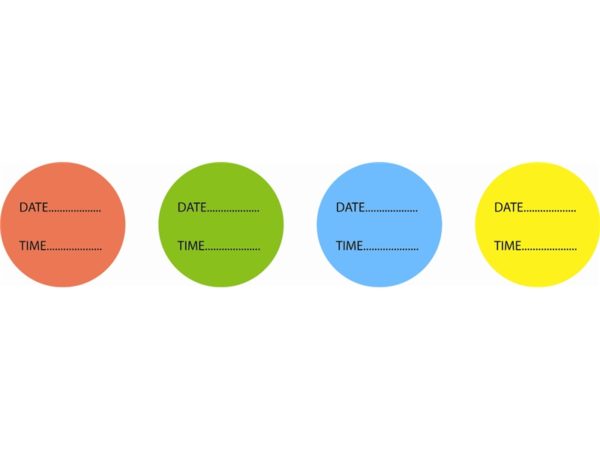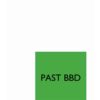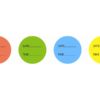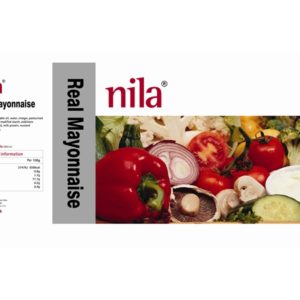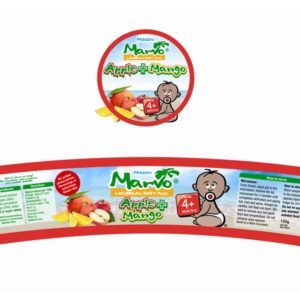Day Labels
Home / Full Product Range / Food and Drink Labels / Day Labels
Printed bespoke to your requirements, day labels from Labelservice can be printed on a range of face papers and adhesives. Digital printing offers you the option of competitively producing short run, multi sort work with zero origination costs, whilst flexographic presses can cater for full production runs. Please contact us for free samples or a printed proof from your artwork.
Day Labels FAQs
Day labels are specialised adhesive labels used to mark and manage perishable products, particularly in the food and beverage industry. They are an essential tool in product management, enabling businesses to track the freshness and shelf life of their products efficiently. By displaying the day of the week on which an item was produced or opened, these labels help staff quickly identify how long a product has been in storage or on display, ensuring optimal product rotation and reducing the risk of selling outdated or spoiled goods. This system not only enhances food safety but also aids in inventory management by providing a clear, visual method of tracking product lifecycles.
Day dots play a crucial role in maintaining food safety and effective management in commercial kitchens. These small, circular labels are used to indicate the day of the week when a food item was prepared or opened. This practice is integral to implementing a first-in, first-out (FIFO) system, ensuring that older stock is used before newer items. By providing a clear and simple visual cue, day dots help kitchen staff quickly identify and use products within their safe consumption period, thereby reducing the risk of foodborne illnesses and ensuring compliance with health and safety regulations.
Food rotation labels are instrumental in reducing food waste in both commercial and domestic settings. These labels, indicating the preparation or expiry date of food items, ensure that older products are used first, adhering to the FIFO system. This method significantly minimises the likelihood of discarding food that has passed its prime, as staff can easily track and use items before they spoil. By streamlining the inventory management process, food rotation labels not only promote sustainability but also contribute to cost savings by reducing unnecessary waste.
The basic principle behind rotating food using day labels is the FIFO (First-In, First-Out) method. This approach ensures that food items are used in the order of their preparation or packaging dates, thereby maintaining freshness and reducing waste. Day labels, marked with the days of the week, are affixed to food items to clearly indicate when they were produced or opened. Staff can then easily identify and prioritise the use of older items before they expire, ensuring that the freshest possible food is served to customers.
There are several varieties of rotation labels available, each designed to cater to different needs in food management. The primary types include:
- **Day-of-the-Week Labels**: These labels display the days of the week and are used to indicate the day an item was prepared or opened.
- **Use-By/Expiry Date Labels**: These specify thedate by which the product should be used or sold, helping to ensure food is consumed while it’s still fresh and safe.
- **Dissolvable Labels**: Ideal for containers that are frequently washed, these labels dissolve under water, leaving no residue.
- **Freezer-Safe Labels**: Specifically designed to withstand low temperatures, these are used for items stored in freezers.
- **Removable Labels**: Easy to remove without leaving sticky residue, suitable for containers that are reused or displayed to customers.
Each type of label serves a specific purpose in food rotation and storage, catering to different aspects of food safety and kitchen efficiency. By choosing the appropriate label type, businesses can streamline their food management processes and maintain high standards of hygiene and quality.
Labelservice’s day labels are crafted with a versatile adhesive that ensures strong adherence to a variety of surfaces, including plastic, metal, and glass. This flexibility is crucial in a commercial kitchen setting where containers of different materials are used. Despite their strong adhesion, these labels are designed to be easily removable, leaving no sticky residue behind. This feature is particularly beneficial for businesses that reuse containers, as it maintains cleanliness and presentation without extra effort.
Yes, Labelservice’s day labels are specifically designed to withstand extreme temperatures, making them suitable for use in freezers, chillers, and even heated environments. They can endure temperatures ranging from as low as -30°C to as high as 70°C. This durability ensures that the labels remain intact and legible, regardless of whether they are used in a hot kitchen environment or a cold storage unit, thereby maintaining their functionality and reliability in various food storage conditions.
Labelservice utilises high-quality self-adhesive vinyl in the production of their day labels. This material is chosen for its durability, flexibility, and ability to adhere to various surfaces. The labels feature a glossy white vinyl finish, which not only enhances visibility but also contributes to their resistance against moisture and temperature variations. The use of such robust materials ensures that the labels remain functional and legible in the demanding environments of commercial kitchens and food storage areas.
Labelservice’s labels are engineered to ensure easy removal from surfaces without leaving any sticky residue. This is achieved through the use of a special adhesive that provides a strong hold during use but can be peeled off cleanly when no longer needed. This feature is particularly advantageous for businesses that use reusable containers, as it ensures that containers can be quickly and easily cleaned for reuse, maintaining hygiene standards and presentation quality without additional cleaning efforts.
Printed bespoke to your requirements, day labels from Labelservice can be printed on a range of face papers and adhesives. Digital printing offers you the option of competitively producing short run, multi sort work with zero origination costs, whilst flexographic presses can cater for full production runs. Please contact us for free samples or a printed proof from your artwork.
Day Labels FAQs
Day labels are specialised adhesive labels used to mark and manage perishable products, particularly in the food and beverage industry. They are an essential tool in product management, enabling businesses to track the freshness and shelf life of their products efficiently. By displaying the day of the week on which an item was produced or opened, these labels help staff quickly identify how long a product has been in storage or on display, ensuring optimal product rotation and reducing the risk of selling outdated or spoiled goods. This system not only enhances food safety but also aids in inventory management by providing a clear, visual method of tracking product lifecycles.
Day dots play a crucial role in maintaining food safety and effective management in commercial kitchens. These small, circular labels are used to indicate the day of the week when a food item was prepared or opened. This practice is integral to implementing a first-in, first-out (FIFO) system, ensuring that older stock is used before newer items. By providing a clear and simple visual cue, day dots help kitchen staff quickly identify and use products within their safe consumption period, thereby reducing the risk of foodborne illnesses and ensuring compliance with health and safety regulations.
Food rotation labels are instrumental in reducing food waste in both commercial and domestic settings. These labels, indicating the preparation or expiry date of food items, ensure that older products are used first, adhering to the FIFO system. This method significantly minimises the likelihood of discarding food that has passed its prime, as staff can easily track and use items before they spoil. By streamlining the inventory management process, food rotation labels not only promote sustainability but also contribute to cost savings by reducing unnecessary waste.
The basic principle behind rotating food using day labels is the FIFO (First-In, First-Out) method. This approach ensures that food items are used in the order of their preparation or packaging dates, thereby maintaining freshness and reducing waste. Day labels, marked with the days of the week, are affixed to food items to clearly indicate when they were produced or opened. Staff can then easily identify and prioritise the use of older items before they expire, ensuring that the freshest possible food is served to customers.
There are several varieties of rotation labels available, each designed to cater to different needs in food management. The primary types include:
- **Day-of-the-Week Labels**: These labels display the days of the week and are used to indicate the day an item was prepared or opened.
- **Use-By/Expiry Date Labels**: These specify thedate by which the product should be used or sold, helping to ensure food is consumed while it’s still fresh and safe.
- **Dissolvable Labels**: Ideal for containers that are frequently washed, these labels dissolve under water, leaving no residue.
- **Freezer-Safe Labels**: Specifically designed to withstand low temperatures, these are used for items stored in freezers.
- **Removable Labels**: Easy to remove without leaving sticky residue, suitable for containers that are reused or displayed to customers.
Each type of label serves a specific purpose in food rotation and storage, catering to different aspects of food safety and kitchen efficiency. By choosing the appropriate label type, businesses can streamline their food management processes and maintain high standards of hygiene and quality.
Labelservice’s day labels are crafted with a versatile adhesive that ensures strong adherence to a variety of surfaces, including plastic, metal, and glass. This flexibility is crucial in a commercial kitchen setting where containers of different materials are used. Despite their strong adhesion, these labels are designed to be easily removable, leaving no sticky residue behind. This feature is particularly beneficial for businesses that reuse containers, as it maintains cleanliness and presentation without extra effort.
Yes, Labelservice’s day labels are specifically designed to withstand extreme temperatures, making them suitable for use in freezers, chillers, and even heated environments. They can endure temperatures ranging from as low as -30°C to as high as 70°C. This durability ensures that the labels remain intact and legible, regardless of whether they are used in a hot kitchen environment or a cold storage unit, thereby maintaining their functionality and reliability in various food storage conditions.
Labelservice utilises high-quality self-adhesive vinyl in the production of their day labels. This material is chosen for its durability, flexibility, and ability to adhere to various surfaces. The labels feature a glossy white vinyl finish, which not only enhances visibility but also contributes to their resistance against moisture and temperature variations. The use of such robust materials ensures that the labels remain functional and legible in the demanding environments of commercial kitchens and food storage areas.
Labelservice’s labels are engineered to ensure easy removal from surfaces without leaving any sticky residue. This is achieved through the use of a special adhesive that provides a strong hold during use but can be peeled off cleanly when no longer needed. This feature is particularly advantageous for businesses that use reusable containers, as it ensures that containers can be quickly and easily cleaned for reuse, maintaining hygiene standards and presentation quality without additional cleaning efforts.



